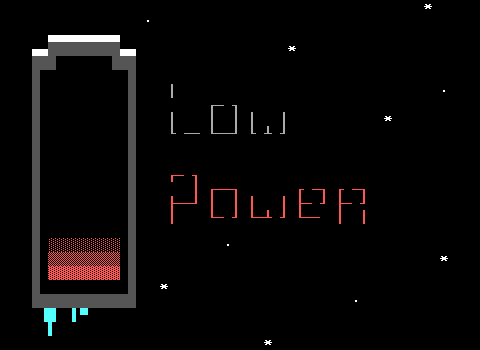Voyage of Two and Voyage of Three
Both James and Sperhe's trek voyage to the lab as well as Chyrisa, Ragzor, and Kazer's hike voyage to the find the plant use the same engine, so it's prudent to lump them together like this.

There's a good amount going on here. WiL's experimentation with procedural generation in Run-On is the influence most would be quick to point to when experiencing this engine. In actuality, this is an implementation of the later Gobble_d_Gook engine from 2000 that was never properly released, only appearing on the Museum and thus to most folks not until late 2019! The boards confirm this by including "GdG" in their titles.
For those not as ZZT-brained, the quickest way to understand it would be to imagine Death Stranding in ZZT. This is an engine about walking difficult terrain over long distances. Once again ZZTers are ahead of mainstream gaming.
Confined to their corner, players walk in a direction until they touch an edge, at which point the object representing the party on the map moves in that direction. From there, the relevant side of the screen produces a random assortment of boulders, sliders, and other errata, shoving the player back to the opposite corner, before turning it into fakes, ammo, breakables, and so forth.


Unlike Run-On which is limited to one "style" of randomization per screen, further terrain-based tweaking is supported with GdG. The larger map that appears to be dark blue on dark blue fakes is actually multiple colors of invisible walls with dark blue background to give it a consistent look during play. When the object needs to step forward, the invisibles are turned into fake walls and a line wall is placed over them. The object can then check for what color line wall can be found on the board, and adjust the terrain generation accordingly.
The engine works rather nicely, though the process takes just long enough that players can see a flicker of color during the process and slowly piece together which tiles are better suited for travel. Some are nearly devoid of obstructions, while others produce enough breakable walls that ammo needs to be expended to shoot your way through. Towards the end, some terrain is outright impassable with entire screens being filled with water.
If the player can't shoot a clear path they have to turn around. As the terrain is randomly generated every time, you can just double-back on anything that isn't a wall of impassable water to reroll the terrain.
If this sounds tedious, well... yeah, it is. It takes time for object to parse where you're heading and then more time for the pushable elements to fill the play-space before the player can move again. It also suffers from the procgen curse in that what gets generated isn't nearly as interesting as human created environments (this will become a common theme outside of ZZT over the next few years). It's just a mess of walls that aren't enjoyable to navigate. Run-On included items to collect and could spawn some of ZZT's creatures to give players something to do whereas Voyage of Four isn't really a lion shooting kind of game.
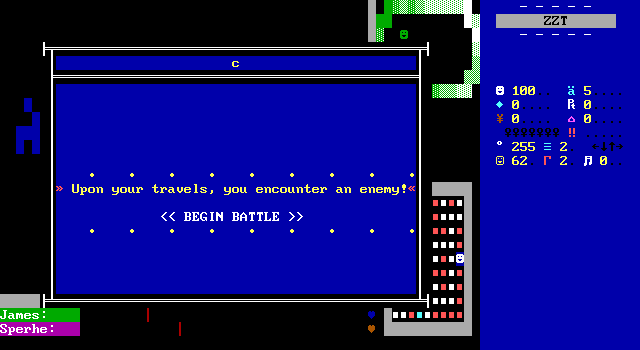
This isn't entirely a walking sim though! WiL has managed to somehow cram a scaled-down version the previous file's RPG engine onto the same board! Both these travel boards clock in at nearly 19,000 out of 20,000 bytes available, so I'd say this is quite the accomplishment. Players can mid-transition bump into enemies (as well as finding supplies that are handed out to them instead of placed in the play space).
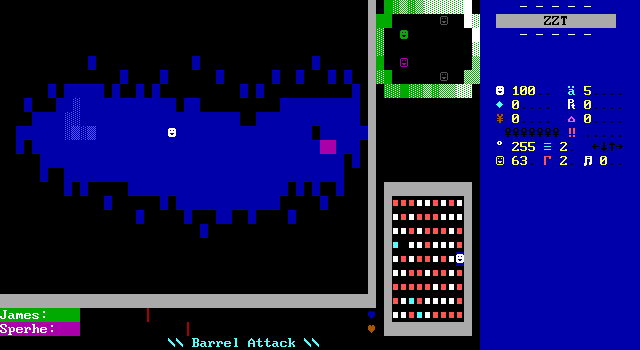
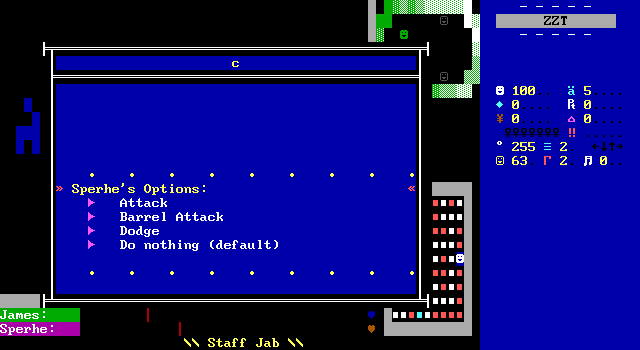
This causes a few generic foes to show up in the upper-right corner. The engine is similar to the first file's, though now characters take actions in order rather than it being a free-for-all to issue commands. James is devoid of his magic as he is on the wrong planet to know how to manipulate its energies. The new characters make up for this with a few multi-hit attacks instead.
The biggest change is that your characters' health won't replenish after a battle. They're infrequent enough that it's not really a problem, though some particularly bad RNG certainly could make it one. After everyone has a attacked a special prompt appears for players to use any items they may have, though this seems broken, as the one time I tried using a potion just to observe how healing would work in this context, the ZZT-OOP code threw an error and halted everything.
Even when it is playing nicely, I have to disagree with Zephyr's twenty year old review. This whole sequence doesn't do anything for me. On a technical level, it is very impressive. It's the sort of thing the ZZT community ate up back then, cramming this never-before-seen movement system and a basic RPG engine onto a single screen. Voyage of Four didn't seem like it was going to be a complex game in terms of code, so these sequences really do come out of nowhere.
It's all well and good until you have to play it. Everything is slow for moving, with most chunks of terrain generated allowing players to get away with holding down a single direction, perhaps having to go around a single wall. The battles are much more what you expect of ZZT RPG engines, with players just spamming an attack until something dies. The other engine was a little more involved, especially when items came into play in later fights. The previous engine also had the advantage of battles feeling meaningful for the purpose of the story. Previously players got to fight their way out of prison, bring down a phony ruler, and eventually banish a djinn with the hopes of ending a bloody war.
Now James is bonking "enemies" on the head with his staff. All the flavoring has been removed, leaving players with something too bland to note. Who are we fighting here? They look like people, and it's not a stretch to imagine them as angry soldiers going against Ogilio's command to save him from being erased from existence, or perhaps some of those Taros Umvir that would like to see Halo conquer Sool. In order to have a fully recyclable battle that can be activated again and again if needed nothing is permitted to be conveyed to the player. It has to be as generic as possible.
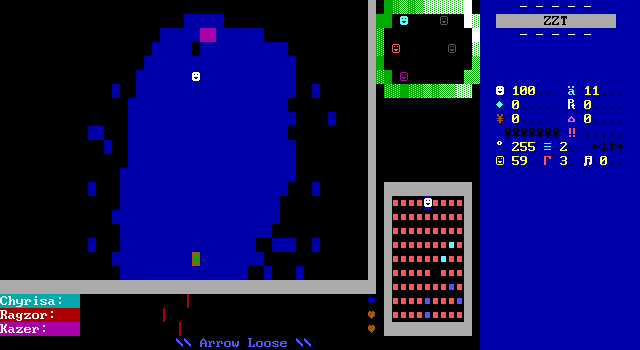
Chyrisa's path is much the same, with the advantage of having a third party member to make fights end a little sooner. Honestly though, by this point I started saving frequently and reloading if I went too few steps before getting into another battle. Having the engine bug out and being able to skip this might almost be a boon to today's audience.
Guiru's Lab
But as the saying I will adamantly refuse to look up definitely goes: It's not about the journey, it's about the destination.
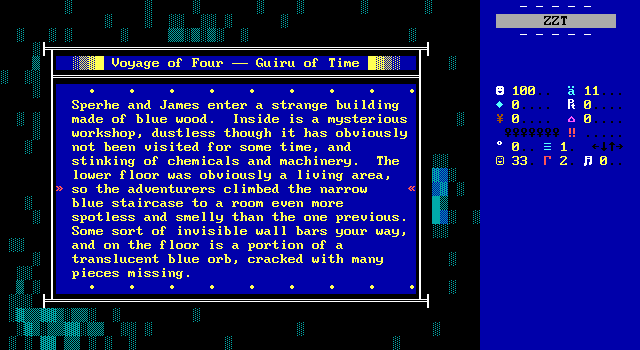

This is much more the WiL I know. Guiru's lab again breaks from the cinema-first approach that much of Voyage of Four adheres to. It's also WiL showing off that unforgettable scenario writing I associate him with today.
Guiru has long since passed, but what does remain are broken memory orbs scattered throughout the lab which each play fractured and broken messages.
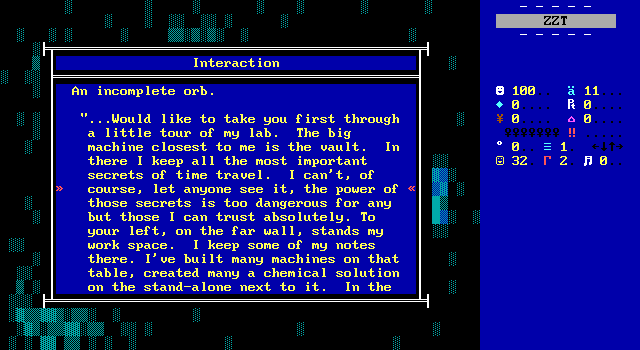
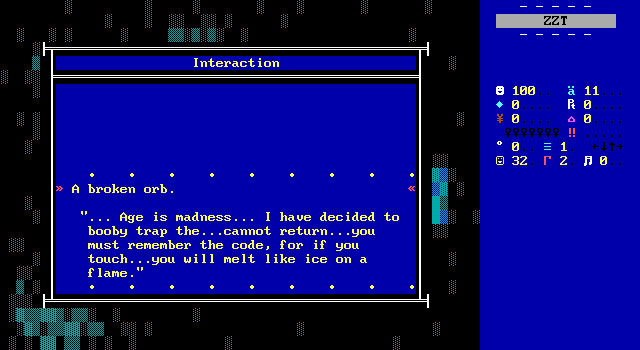
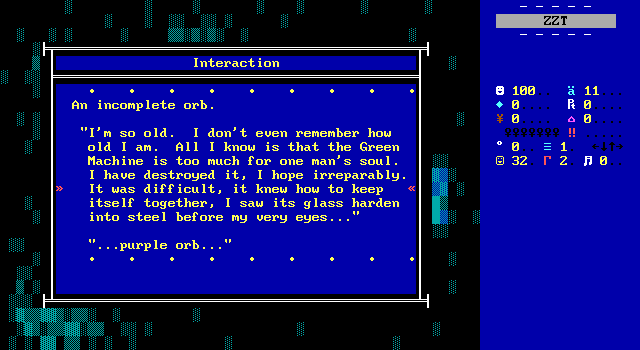
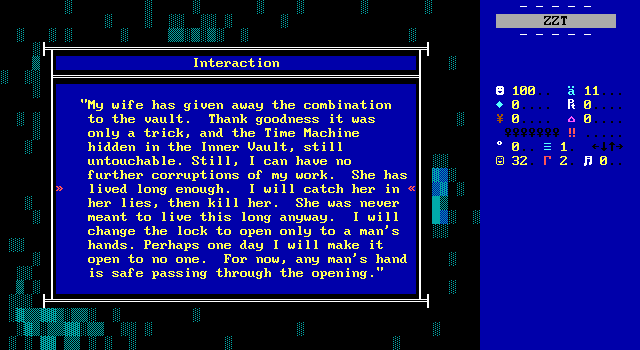
If file two feels a bit out of place compared to what came before, Guiru's story is just so far out there that I'm utterly captivated by it. The orbs are all over the place, and examining them gives players hints on how to obtain the time machine they're after, but they also paint the portrait of a man utterly consumed by his work and eventually driven to madness because of it.
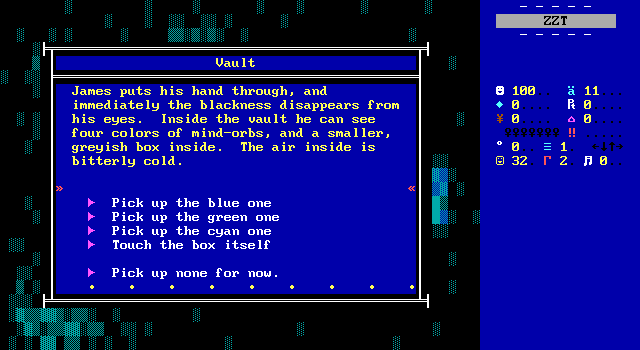
I wish I could compliment the puzzle itself. The party refuses to interact with the door-less vault that appears to be filled with blackness until at least some information is gathered. From there James needs to pick up the orbs inside in the proper order. While colors are mentioned in the orbs' messages, those colors don't match up with those in the vault. The only clue I could pick up on was one message about "reverse order" whose real meaning didn't make sense to me until after the puzzle was solved.
By "solved" I mean brute forced. There are only a few options available, with wrong decisions either forcing James out of the vault and having to start over or killing him in spectacular ways. Not gory as most games would have you expect. (I was honestly relieved that James doesn't lose a hand sticking it in there. But I guess this isn't ZOZ)
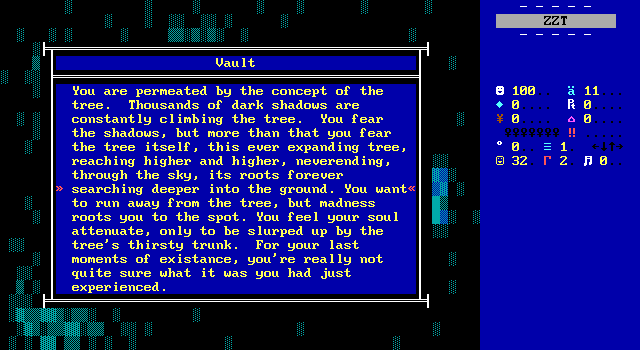
Legit, this vault may be the weirdest way I've ever died in a ZZT game before. This isn't even the only way to go.
Solving the puzzle nets you a time machine, as well as the chance to check out a few of the other items Guiru found equally valuable. Again, it's top notch characterization. All of this is enough to make me go back on my thought that these traveling sequences are better off being skipped. You absolutely don't want to miss this.
Plant Gathering
The walk is much the same for the other group sent to recover the plant. For the lab, there was the payoff of a really unique place to explore with plenty of pieces to try and figure out how they all fit together that make the overall trip worth the effort. For Chyrisa and friends, the reward is an RPG battle that uses the style seen the in first file.
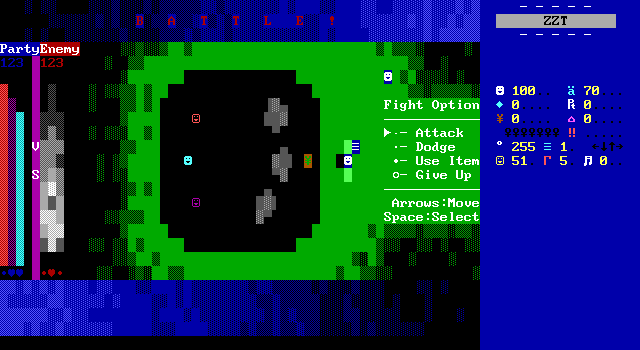
Three living stones are the opponents, with all of their attacks being accompanied by each of them saying "stones" with extra emphasis on a different pair of letters. By this point, players have seen all these fights have to offer, save for one unique aspect of the fight that sadly also introduces some bugs.
The stones health meters have a gimmick where each one has an object that burrows its way up and down the bar. The intent is that your damage can end up shooting these objects when they're towards the top of the meter, causing reduced or no damage at all, but the use of breakable walls for measuring health causes problems.
To do the burrowing, the object has to check if it's blocked in that direction, and if so it will place an empty and move, placing a breakable wall in the opposite direction. It's also why there's a gap before the objects that mark the end of the health bars, not being blocked before moving means that the object has reached the end and needs to turn around. Visually, this looks pretty neat!
The problem is that in order to destroy the breakables, bullets have to be fired. A bullet about to strike the object in the bar means that the object is now blocked in a direction it wouldn't be, causing the damage you should be inflicting to be transformed into new health for the stones! At first, this doesn't seem like it's necessarily a bug. Perhaps originally unintended, but having to consider the timing of your attacks lest a blow end up healing these magic rocks seems like a neat gimmick for a late-game fight. One that's certainly more unique than the djinn's winding health bar at least.
Where it becomes clear that this is a bug is if it happens to the second stone before it takes any damage. With its extra few hit points, running into the glitch doesn't just heal the stone, it also causes it to continue upward, erasing the object responsible for inflicting damage, and breaking into the border before running into an empty found in the blue shading. The moment this happens the battle instantly becomes unwinnable.

This is a nasty issue that seems like it should be easily avoidable, but the real-time nature of combat means that when players can actually attack is fairly fixed. It ends up being surprisingly easy to stumble into, and ends up being a much more frustrating issue than the previous bug of skipping over these sequences entirely.
Manage to defeat the stones and then you'll wind up back with Cyros and Ogilio, where bugged and non-bugged playthroughs merge once more.
Un-Making
Once everyone reconvenes, Cyros and Ogilio proceed to the lake to perform the un-making. This returns to the pure cut-scene format with no player guidance. The two instantly arrive where they need to be (thank goodness), and begin to figure out the ritual.
The machine is activated by being splashed with the waters of the lake which have unique properties. These properties aren't essential for the ritual, serving as a security measure to keep it from being activated unintentionally. From there Ogilio is tasked with fighting the emptiness as he's erased.
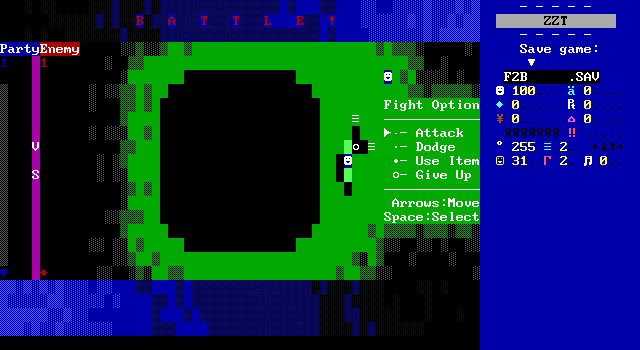
Here WiL takes a cue from the RPG genre in general and presents players with a fight that is really a part of the story rather than an obstacle to survive. Players can fight, compromising the ritual and altering the ending in such a way where Ogilio's actions are not undone, leaving Cyros to return to a world where his family was slain and his village destroyed.
Instead, the Magic Nail item that can be acquired in the previous file is to be used to make the emptiness vulnerable to damage, essentially making it a one hit fight and allowing Ogilio to be unmade.
The bad ending here is kind of annoying as the nail is given only to players that do well enough in the first file to push back against Tara and assault the fortress rather than to be captured and thrown into its prison. I don't mind the lesser ending for a worse performance, that's reasonable enough. What bothers me though is how far back you'd need to go to try again. Your ending has already been sealed ages ago back when Chyrisa was busy making banners.
The nail is also really easy to forget about, as it's given out after a fight with no explanation of what purpose it has, other than it will be useful later. I could imagine myself or other players spending their time trying to figure out the story, completely forgetting about this random item they got in a previous file that had no stated purpose.
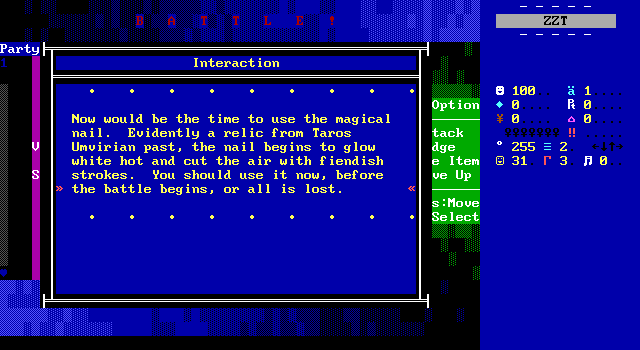
Realistically though, if you have the nail you will be using it. WiL outright spells out the solution at the start of the battle for those that have it. This feels like a clunky reminder patched into the game rather than something naturally woven into the story. At this point, I feel it would have been preferable to skip the battle entirely and just have a cut-scene where the nail is used if Cyros has it.

Issues with the RPG battle aside, the scene that follows is fantastic, more than making up for the clumsiness handling of the nail. A flash to gray (which I didn't even realize ZZT-OOP could do) overtakes the screen, with the next board showing the scene from a distance, with some chaotic colors beaming up from where Ogilio was just standing.
Afterwards, I assume the un-making means that everything returns to normal. The game takes players back to Sool, showing Cyros arriving with all his memories of what had happened intact.
#Play It Loud
Returning to the first file for a moment, there was one glaring omission from the first article, and that was the subject of WiL's various compositions for the game. If you've played a game scored by WiL, there's guaranteed to be a least one tune that will pop into your head at random for the rest of your life. (For me, it's the ending theme for Deceiving Guidance.) Voyage of Four is no slouch here, and as the game itself is a WiL original, the musical interludes and background tracks are matched perfectly to one another.
Music is a major part of the game's first file from the very first non-meta-narrative board. The story begins in earnest with Cyros playing the flute at the top of a mountain that overlooks his village of Ifos. Cyros's musical skills are never brought up again, but let WiL open with a jam:

The deluge of sounds in the earliest chapters of the game left me constantly impressed. The music is the secret sauce that allows Voyage of Four to win anyone over. Few ZZT games have the luxury of being able to set the mood like this, making quality music a very effective hook for those capable of implementing it. WiL transforms the cinema into an opera, turning what would be easily dismissed as the usual tropes into riveting scenes where it feels like anything could happen.
The only complaint one could have with the music is that it's significantly front-loaded. It would be unfair to ask WiL to write original music for more than fifty boards, but tracks become harder and harder to come by as the game progresses. In particular, the second file lacks any songs until the game's epilogue, leaving the game to descend into silence until it's about time to lower the curtain and roll credits.
At the very least, it ends with another banger:
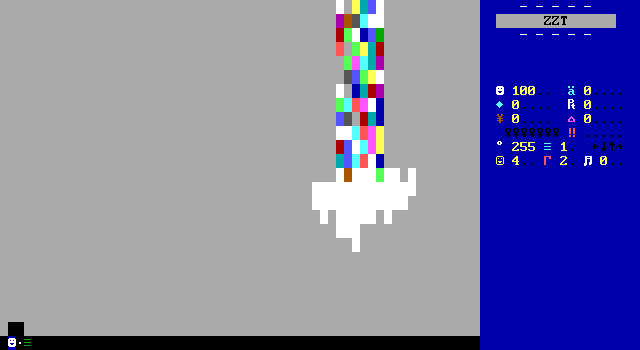
If we're sampling some of the game's music, I think WiL's most impressive work is "Winds of Thirteen"[2], played during the intermission scene when the world changes from Cyros's perspective to Chyrisa's. It's the kind of song that sometimes makes you forget that ZZT is limited to just one instrument, leaving you pumped up to see what happens in Rehana and how it will relate to Cyros and James.
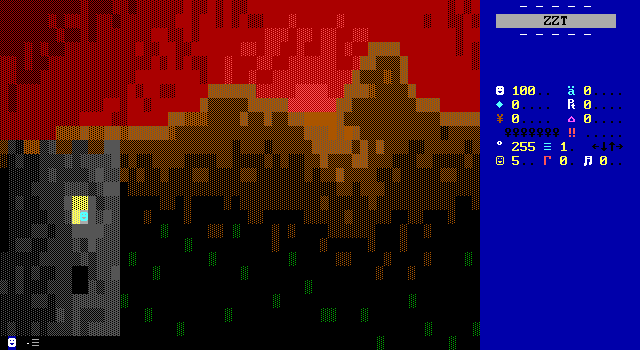
While it may not last the entire voyage, WiL's soundtrack is an excellent example of ZZT music. All the events that unfold feel that much more impactful thanks to these backing tunes. Plenty of worlds out there ask players to quickly get on board with their character's motivations, few can do so as effectively as WiL does with his one-two punch of musical mood-setting and strong characterization. Perhaps Voyage of Four would still be an impressive tale without its music, but WiL's ability to grab your attention so quickly does wonders to get one interested what might otherwise be a story engaged in with hesitance.
Medieval warfare is the foundation for many a story in ZZT. At a certain point, you stop expecting to be impressed. WiL puts forth his best efforts in all aspects of the game, music included, to take something so commonplace and find a way to make it exciting once again.
Final Thoughts
As long as this voyage may have been, it's one I am glad I had the chance to check out. This is a game that puts so much faith in what kind of stories can be told in ZZT, shoots for the moon, and makes it there. The general style is very much early 21st century ZZT with its focus on RPG battles, a small party of characters, and a battle between good and evil, but it develops into so much more. I can't recall being as invested in a ZZT storyline as deeply as this until Ana, which coincidentally also uses its soundtrack to transform well-made board into something truly special.
In a lot of ZZT dramas, you can clearly recognize the ambition such as Rhygar striving to capture epic storytelling of 16-bit RPGs that were being unleashed on impressionable teenagers in the 90s, and Freedom trying to blend sound and cinema to create a ZZT rock opera. These are worlds that were well received in their day, and hold a special place in many older ZZTers hearts, and for good reason! Yet, going back to them today, that ambition is really all that remains. You have to respect the authors for trying so earnestly to create a true piece of art, and not just a toy for the ZZT community to shoot their way through.
Nowadays these games have lost their ability to capture imaginations the way they once did. I had assumed that this was the fate of all ZZT worlds, to show their age, simplicity, and rough edges at every turn. Yet somehow Voyage of Four has held up. There are definite issues in the case of the second file's outright bugs, and more subjective aspects to nitpick, whether that be the dramatic shift the second file takes or the appalling behavior shown by Cyros and James when they discover Chyrisa that felt incredibly out of place to me. Issues aside, this game truly stuck with me thanks to its storytelling that feels years ahead of the curve for ZZT. To pull off a drama like this at such a young age, and for it to still hold up today is nothing short of remarkable.
Voyage of Four is overall one of the most impressive games of its time, and one with so much to offer today. Not everything is as smooth as it could have been, then or now, but I think if you take a voyage to the Outlands, it won't be long before you're feeling Cyros's pain and wanting to do whatever you can to see him succeed.

